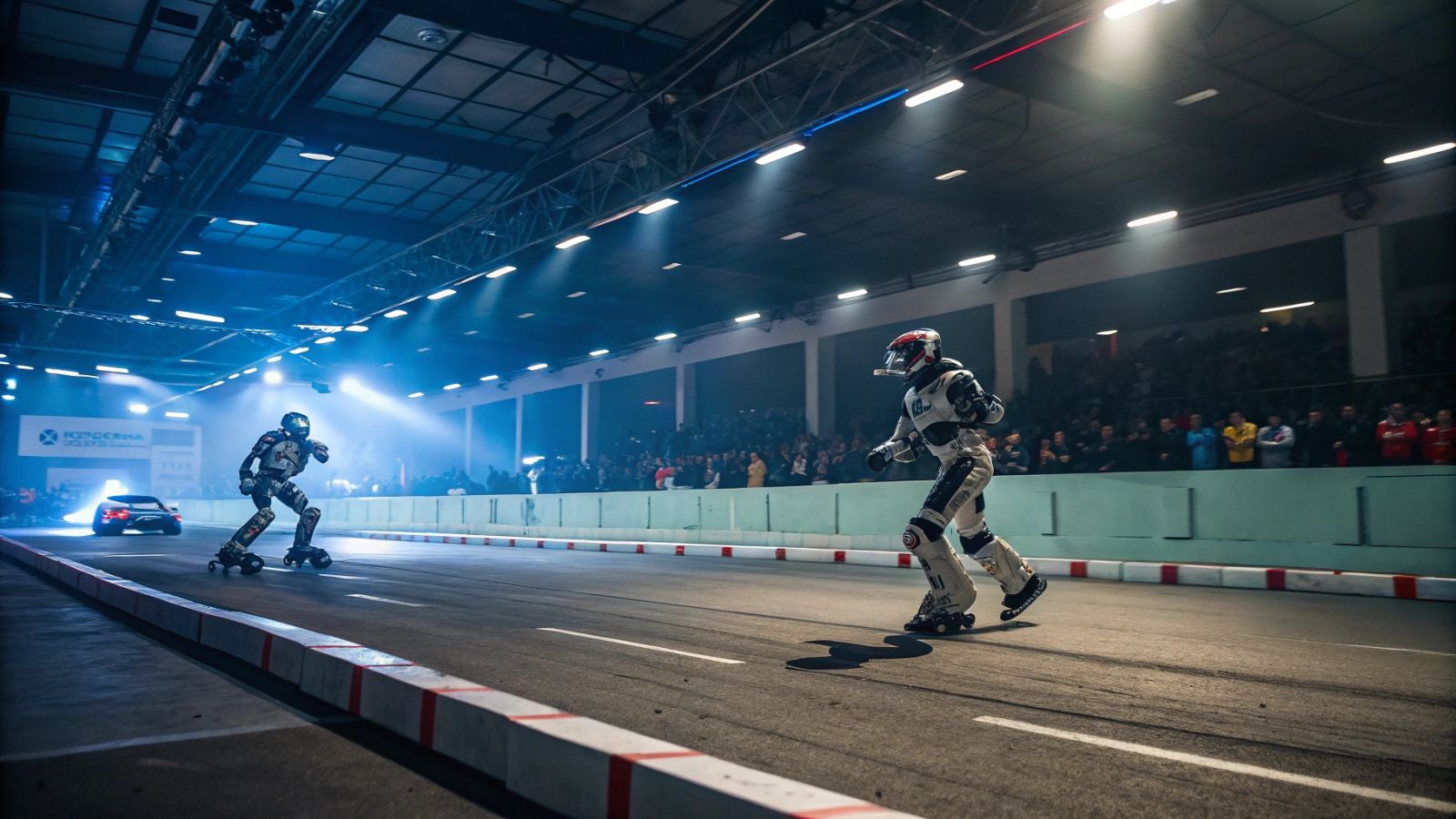Introduction
Humanoid robot games: the inaugural World Humanoid Robot Games in Beijing gathered over 500 humanoid robots across 26 events, from football and boxing to medicine sorting and cleaning, illustrating both technical advances and practical limits. This article examines key outcomes, engineering challenges, experimental approaches and geopolitical implications observed during the competition.
Context
The event took place at Beijing's National Speed Skating Oval with 280 teams from 16 countries. The Chinese government has positioned humanoid robotics at the center of national strategy, pairing public visibility with substantial funding and industry incentives to accelerate embodied AI and real-world applications.
The problem / Technical challenges
Competitions highlighted recurring technical gaps: dynamic balance, battery life, mechanical durability of parts (heads, limbs), movement precision and reliability in non-deterministic settings. Notable incidents included frequent falls during football and martial-arts matches, a robot dropping its head mid‑race and general underperformance in endurance and speed compared to humans.
Observed limitations
- Dynamic stability and fall recovery
- Mechanical robustness under repeated stress
- Energy management limiting intensity and duration
- Execution of complex, precise movements in unpredictable scenarios
"I think right now if they are not already the world leader, they are very, very quickly becoming it,"
Joost Weerheim, Dutch five-a-side robot football team
Solution / Experimental approaches
Teams capitalized on the competitive environment to run low-cost experiments, validate algorithms, and expose failure modes without committing to commercial production. This practice accelerates knowledge about control systems, sensing integration and power strategies that are critical for practical deployments.
Recommended practices emerging from the games
- Rapid prototyping and field testing to reveal real-world failures
- Design for modularity to replace or upgrade stressed components quickly
- Prioritize reliability over peak performance for sustained operations
- Implement fine-grained telemetry to optimize power use during dynamic tasks
Strategic and geopolitical implications
The competitions are both a technological showcase and a strategic signal: promoting domestic supply chains, drawing capital into robotics, and building national competence in applied AI. Despite US strengths in frontier research, China’s scale, funding and production supply chain advantages can accelerate application-driven leadership.
Conclusion
The World Humanoid Robot Games exposed both promising advances and significant engineering gaps. Competitions proved valuable as large-scale, real-world experiments that inform design priorities: improve robustness, energy strategies and scalable testing to move from spectacle to reliable application.
FAQ
- How do you measure progress in humanoid robot games for five-a-side football? Operational metrics: action success rates (passes, shots), fall frequency, recovery time and battery endurance under match conditions.
- Which technical limits appear most often in humanoid robot games? Dynamic stability, energy management and mechanical robustness are the most common constraints observed in competition.
- How do teams use humanoid robot games for research? Teams run rapid field trials of prototypes to collect failure-mode data and refine controllers and mechanical designs.
- What are the geopolitical implications of humanoid robot games? The games showcase industrial capability, attract investment and reinforce national supply chains for embodied AI applications.
